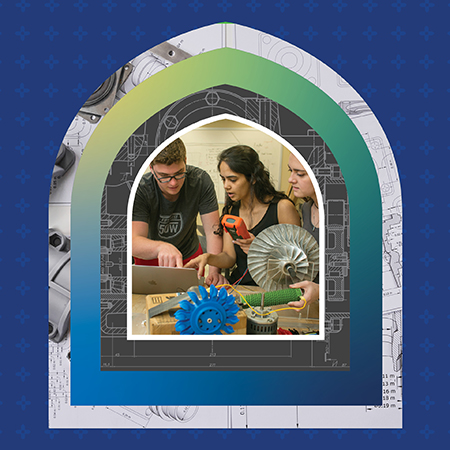A Shrink Ray for Proteins

In August 2024, computational biologist Rohit Singh took to social media to introduce Raygun, a new approach to protein design. The artificial intelligence tool his team created helps biologists “shrink” or “expand” existing proteins.
His post got nearly 200,000 views and nearly 1,000 likes. He also posted a link to a draft paper on a website where scientists share work ahead of formal publication.
At the University of California San Diego, biophysics Ph.D. student Young Su Ko was intrigued. “Rohit is a big guy in the field. I was a fan of his research,” Ko said.
Ko decided to use Raygun to compete in a protein design competition. To his surprise, the tool helped him design two new proteins that may show promise as chemotherapies, and he placed top 10 in the contest.
Raygun is just one of several tools that Singh, an assistant professor of biostatistics & bioinformatics and cell biology at Duke, has built to help scientists work both faster and smarter to understand disease and ultimately develop better therapies. Most of them he makes widely available for further development.
Singh isn’t averse to profiting from his work, having previously applied AI to the financial world, including founding a startup company that used deep learning to help small businesses assess risk and get credit. He has worked with Duke’s Office of Translation and Commercialization to file a provisional patent on CoNCISE, a tool that can scan a catalog of billions of chemical compounds in seconds. And he aims to patent commercial uses of Raygun, too.
But he sees value in making tools accessible to other scientists early on. “You need to make it easy for people to build on top of it and try things out,” he said. “Science is better for sharing.”
_____
While other computational biologists have created tools that can design an entirely new protein from scratch, Singh’s team developed Raygun to improve upon existing proteins by adding or deleting amino acids. That is, by “shrinking” or “enlarging” them.
Singh and postdoctoral fellow Kapil Devkota named it Raygun in homage to the movie “Honey I Shrunk the Kids,” in which a scientist invents a “shrink ray” that blasts a laser to miniaturize objects. Unlike its movie counterpart, Raygun isn’t a laser, it’s a machine- learning framework—a computer program that runs two different algorithms.
Singh’s team used Raygun to “shrink” two proteins that are commonly used as fluorescent reporters (eGFP and mCherry). Scott Soderling, professor and chair of cell biology at Duke, had the DNA encoding the redesigned proteins synthesized by a company, then conducted cell-based imaging experiments with the proteins to show that they still maintained their fluorescent properties.
This shows that Raygun may be useful for creating more accurate biological sensors. “So much of biology is about imaging now,” Singh said.
Singh, Devkota, and team are computer scientists, so they spend much of their time “writing tons and tons of code.” But they do this tucked outside a cell biology wet lab on the fourth floor of the Sands basic sciences building, embedded with the scientists who can benefit from their tools.
In this model for “discovery AI” at Duke, the computer scientists are “a vital part of the ecosystem of basic science in which biologists and computer scientists work together,” Soderling said.
_____
Raygun is good at enlarging proteins, too, as Ko’s success in the protein design competition showed. Contestants were asked to design new proteins that would be relevant to chemotherapy, specifically proteins that would bind to epidermal growth factor receptor, which is involved in several types of cancers, including breast cancer.
Ko posted about the win on social media, but he never expected Singh to see it. But Singh did, and he reached out to Ko. They’re now collaborating, adding Ko’s results to a paper the team has submitted for journal publication, with Devkota as first author.
“It’s one of those cool things,” Singh said. “We built something that we think of as a fundamental innovation, then people took it in directions we didn’t imagine.”


